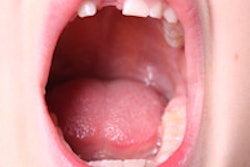
Researchers at the New York University (NYU) College of Nursing have developed a new program designed to develop increased awareness in nursing and medical students' oral health knowledge, according to a new report in the American Journal of Public Health (January 20, 2015).
It is acknowledged that there is a need to improve oral health and oral health awareness; however, current curricula for nurse practitioners, nurse midwives, and physician assistants include very little instruction or clinical training about oral health, the authors noted.
About 70% of medical schools include only about four hours on oral health in their curriculum, and 10% have no oral health content at all, the researchers pointed out. Similarly, nurse practitioners and nurse midwives have little if any oral health instruction or clinical experience.
To increase oral health awareness, the Teaching Oral-Systemic Health (TOSH) Program seeks to alter the traditional head, ears, eyes, nose, and throat (HEENT) examination to add teeth, gums, mucosa, tongue, and palate examination (HEENOT) for assessment, diagnosis, and treatment of oral-systemic health problems.
The traditional HEENT exam, while established among primary care providers, excludes oral cavity examination and omits oral health and its links to a patient's overall health, the authors wrote. The philosophy is that the revised HEENOT approach means that oral health is no longer omitted from the history and physical examination by health professionals.
The aim of the TOSH program is to develop innovative simulation and "live" interprofessional clinical experiences that focus on oral-systemic health for nurse practitioners, nurse midwives, and medical and dental students. In the clinical simulation center, students participate in evaluating simulated patient complaints, including mouth pain, bleeding gums, mucosal ulcerations, and sore throats.
 Judith Haber, PhD, associate dean for graduate programs, New York University College of Nursing. Image courtesy of NYU College of Nursing.
Judith Haber, PhD, associate dean for graduate programs, New York University College of Nursing. Image courtesy of NYU College of Nursing.This strategy is designed to increase oral health screenings, detect oral health comorbidities, and encourage preventive interventions, including referrals to dental colleagues by primary care providers in community-based settings for acute or chronic health problems that are commonly seen by primary care providers.
Incorporating the "O" for oral cavity assessment adds a comprehensive focus on the oral-systemic history and physical examination of the oral cavity, explained Judith Haber, PhD, the associate dean for graduate programs at the NYU College of Nursing and principal investigator for the TOSH Program.
"At TOSH, we are challenging the medical profession, including nurses, nurse practitioners, midwives, physicians, and physician assistants to 'Put the Mouth Back in the Head' by transitioning from the traditional HEENT exam to the HEENOT exam," Haber said in a statement.
"The integration of the HEENOT approach in primary care is a simple and effective method to decrease oral health disparities by increasing interprofessional oral health workforce capacity," explained Erin Hartnett, DNP, TOSH program director.
"The TOSH program has dramatically enhanced the interprofessional collaboration between the nurse practitioner, dental, and medical students," said Ken Allen, DDS, the associate chair and a clinical associate professor in the department of cariology and comprehensive care at NYU's College of Dentistry. "Working together, they have formed a unique bond while teaching and promoting the concept of including the oral examination as an integral part of every patient assessment, something that was often overlooked in the past."
Incorporating the HEENOT approach as an integral component of primary care addresses these issues:
- Early childhood caries is the most common chronic disease of childhood in 5- to 17-year-olds, five times more common than asthma.
- Application of fluoride varnish can reduce the incidence of caries in children by up to 50%.
- Oral cancer morbidity and mortality rates have not declined over the past 10 years, at least, in part, related to absent or inadequate oral exams.
- Human papillomavirus (HPV) is associated with the recent rise in the incidence of oropharyngeal cancer.
- Linkages between diabetes and periodontal disease are established.
- Older adults taking multiple medications for chronic health problems often have xerostomia, increasing their risk for caries and poor nutrition.
A 2014 government health report, "Integrating Oral Health and Primary Care Practice," emphasizes the importance of the primary care workforce developing interprofessional oral health core competencies to increase access to preventive oral healthcare from multiple nondental healthcare practitioners.
"The exposure to interprofessional oral health HEENOT classroom, simulation, and clinical experiences was associated with increased dental-primary care referrals," Haber said
With oral health becoming recognized as integral to the general health of populations across the life span, clinical education programs preparing the next generation of health professionals can rectify the dearth of oral health content and clinical experiences by adopting the HEENOT approach as a standard component of the curriculum, the authors concluded.



















